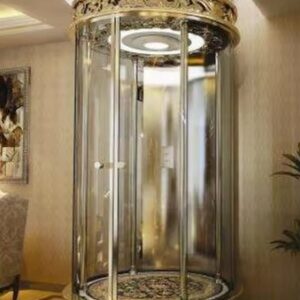Cost of Lift in Nigeria
Cost of Lift in Nigeria
The cost of a lift in Nigeria varies based on factors such as type, capacity, number of floors, installation complexity, and customization. Prices range from affordable options for residential buildings to high-end models for commercial spaces. Additional costs include maintenance, energy efficiency features, and market fluctuations affecting final pricing.
Product Description
Cost of Lift in Nigeria
The cost of installing a lift in Nigeria depends on several factors, including the type of lift, building height, capacity, installation requirements, and customization options. Prices vary widely, from basic residential models to high-end lifts for commercial skyscrapers, hotels, and luxury properties.
Types of Lifts and Their Costs
The type of lift significantly impacts its price.
- Hydraulic Lifts: Common in low-rise buildings, these are often more affordable but require higher maintenance over time.
- Traction Lifts: Available in geared and gearless models, they are widely used in mid-rise and high-rise buildings for their energy efficiency and durability. However, they tend to be more expensive.
- Machine-Room-Less (MRL) Lifts: These space-saving lifts eliminate the need for a machine room. They offer efficiency but can be costly, depending on specifications.
Capacity and Pricing
Lift capacity plays a crucial role in pricing.
- Smaller Lifts: Models designed for four to six passengers are more affordable.
- Larger Lifts: Commercial spaces, malls, and hotels need high-capacity lifts for efficient passenger movement. These require stronger motors and advanced control systems, increasing costs.
- Lift Speed: High-speed lifts for tall buildings use sophisticated motor and control technology, making them more expensive than standard-speed models for low-rise structures.
Impact of Floors and Installation Complexity
The number of floors a lift serves affects its cost.
- Low-Rise Buildings: Lifts with only a few stops are significantly cheaper.
- High-Rise Buildings: These require advanced engineering, stronger cables, and efficient braking systems, increasing overall expenses.
Installing a lift in an existing building adds complexity and cost. Retrofitting requires structural modifications like shaft reinforcement, electrical upgrades, and safety compliance, raising expenses.
Customization and Aesthetic Upgrades
Design and features also influence lift pricing.
- Basic Models: Standard interiors and simple finishes keep costs low.
- Luxury Models: Glass panels, custom lighting, touchscreen controls, and premium materials increase costs. Many high-end apartments, hotels, and offices choose customized lifts to match their architectural style.
- Smart Features: Lifts with energy efficiency, remote monitoring, destination control systems, and touchless operation cost more due to advanced engineering.
Maintenance and Long-Term Costs
Beyond installation, maintenance costs must be considered.
- Regular Servicing: Ensures safe operation, prevents breakdowns, and extends the lift’s lifespan.
- Cost Variations: Advanced lifts with complex features require specialized technicians, increasing maintenance expenses.
- Market Factors: Prices fluctuate due to exchange rates, import duties, and supplier variations.













Reviews
There are no reviews yet.